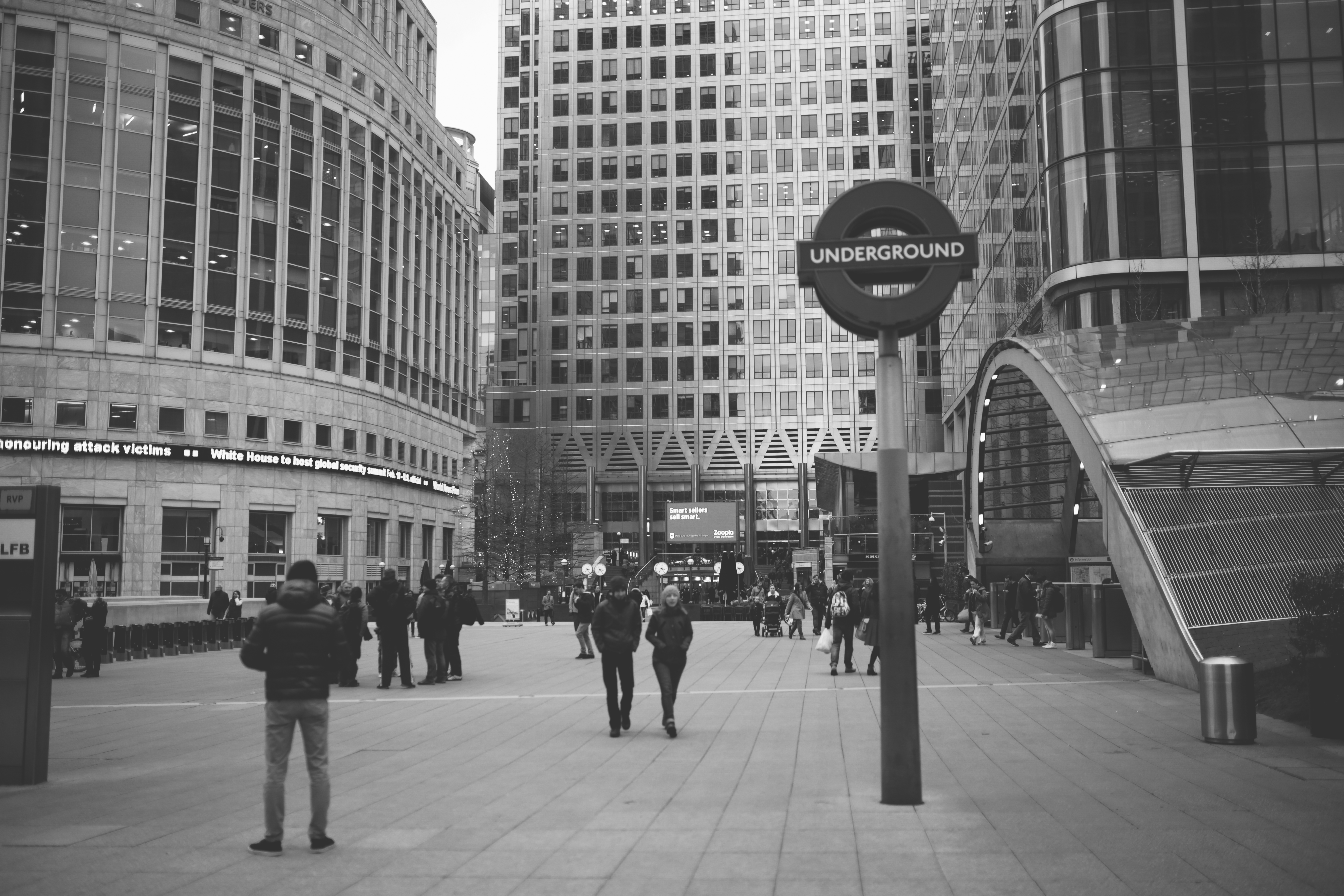A 2007 report from the Royal Institution of Chartered Surveyors (RICS) described the growing private ownership and management of the public realm as a “quiet revolution in land ownership”.
The study included a handful of early examples, such as the Excel Centre and Canary Wharf in London, and Liverpool’s Paradise Street development (later rebranded Liverpool One). Since then, more of these privately owned public spaces (POPS) have been appearing across the UK, including Granary Square and the Queen Elizabeth Olympic Park in London, Gunwharf Quays in Portsmouth, and Brindleyplace in Birmingham.
The evolution of public space
Until relatively recently, local government owned, managed and maintained streets and squares in the UK’s towns and cities. But over the past two decades, budgetary constraints have diminished local authorities’ ability to maintain the public realm. Increasingly, the gap has been filled by the private sector, which has created new POPS.
On the face of it, the redevelopment of previously run-down areas with no cost to the public purse would appear to be a good thing. But there are concerns about the private landlords of these spaces who have the power to restrict and control activities of the public using these spaces. Alongside these new private-public developments, the rise of Business Improvement Districts (BIDs) has increased private sector influence over town and city centres.
A bridge too far?
The issue of privatised public spaces was given renewed prominence with the proposals for a new “Garden Bridge” across the River Thames. Designed by Thomas Heatherwick the project envisions a pedestrian bridge with its own elevated garden.
Supporters say the Garden Bridge will enrich London, providing economic, environmental and aesthetic benefits. But opponents have expressed concerns about a list of rules prohibiting activities on the bridge, such as busking and cycling. Restrictions of this kind have been applied to other POPS, sometimes resulting in awkward encounters between members of the public and security guards representing the property managers.
As things stand, the fate of the Garden Bridge remains uncertain, following the decision by the Mayor of London to set up an inquiry into the project’s use of public money, and a warning from the National Audit Office that the money may have been wasted.
The pros and cons of POPS
But does it really matter if urban spaces that appear to be public are actually privately-owned?
No, say POPS supporters. Without private funding, spaces such as Brindleyplace and LiverpoolOne might not have been developed at all. Furthermore, the cost of maintaining these privately owned public spaces can be borne by the private sector, instead of local authorities (and the taxpayer). They also point to Liverpool One as a successful example of town centre regeneration, and suggest that private ownership of public space can be a catalyst for renewal of neglected spaces.
But others are unhappy with the creeping privatisation of public spaces, arguing that they sacrifice community spirit and historical identity for the sake of a sterile, monotonous, corporatised spaces. Opponents of POPS are also concerned about the restrictions land owners place on such spaces.
The view from Aberdeen
One city which has recently bucked the trend towards private control over public spaces is Aberdeen. In 2010, the city council planned to hand over the historic Union Terrace Gardens in the city centre to a consortium of business interests – Aberdeen City Garden Trust – under a long lease. The trust released its plans to redesign the Victorian park, raising the sunken gardens to street level. Campaign groups mounted opposition to the scheme, but it was narrowly approved in a city-wide referendum in 2012. However, a new Labour administration came to power shortly after the referendum, and the scheme was finally scrapped. During the summer of 2016, the council announced new plans to redevelop the site, which will remain in public hands.
Final thoughts
The Aberdeen example shows that moves to put public spaces in private hands are not universally popular, or inevitable. Even so, many local authorities are struggling to maintain public spaces, leaving the way open for private developers. The Queen Elizabeth Olympic Park, in the borough of Newham, is one of the most recent POPS to appear in London. Sir Robin Wales, the elected mayor of Newham would have preferred the park to be maintained using public funds, but has accepted that his borough could not afford to manage it: “We know we don’t have an income stream.”
Enjoyed this article? Read these other articles written by our team:
- Going green together: regeneration through shared spaces
- Single sector Business Improvement Districts: the future of BIDS in Scotland?
- Evolution or revolution … the challenge of delivering future high streets
- Not dead, evolving – high streets of the future
- Who pays for parks? Are ‘green benefit districts’ the answer?
Share
Related Posts
Tackling geographical inequalities is critical for ensuring that all parts of the country have the potential to prosper. When the UK was a member of the European Union, it was entitled to a share of funding from the EU’s structural ....
By Ian Babelon A new-old concept for proximity “Are we there yet?” Parents may patiently nod to their children’s insistent nudges on a 20-minute journey to… somewhere. Quite rightly, researchers have asked: twenty minutes to what? The answer may well ....
Following the adoption of National Planning Framework 4 (NPF4) at the end of February, the Scottish planning system and planning services are dealing with transitioning to a development plan system without statutory supplementary guidance and where the relationship to current ....


